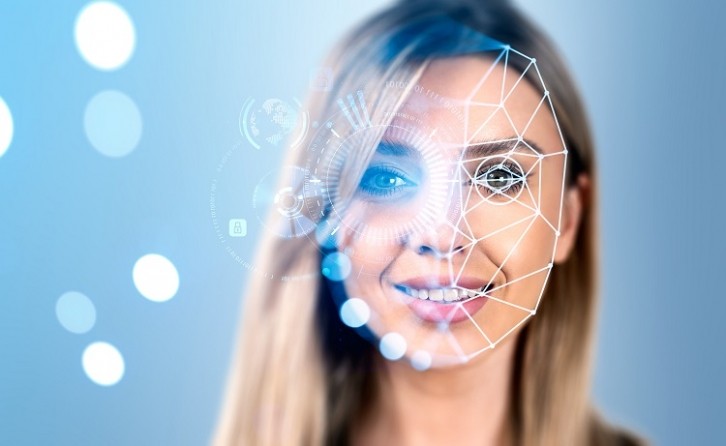How AI is disrupting retail

AI-enabled technology won’t replace food stores. But food stores with AI-enabled technology will replace food stores without it.
This is how professor of marketing Sabine Benoit sees it. The University of Surrey academic believes that in the future, all products in food stores – except for the food itself – will be powered by artificial intelligence. That means everything from shelves to cashiers and trolleys will all be AI-enabled.
Acknowledging these innovations have the potential to disrupt the food retail landscape as we know it, we’ve rounded up seven AI-enabled products promising to reshape how consumers shop.
1. Bringing more people into small retail stores
One would be forgiven for believing AI is best suited to big-name supermarket retailers. But small, local retail stores can also benefit from AI-enabled products.
How? Well, when purchasing products in-store, consumers often buy online and pick up in-store (BOPIS), or search online and purchase in-store (SOPIS). In both these scenarios, the consumer is using the internet prior to purchasing the product.
The problem is that these scenarios are likely to lead consumers to big-name retailers, rather than smaller, local stores. AI-enabled technology, however, can help encourage consumers to shop locally.
NearSt in the UK is one example of an AI-enabled start-up working to bring people back into high street shops. Once local retailers have signed up to the platform, consumers can easily find what products they sell. An associated Google Maps plugin means shoppers will be alerted to stores within walking distance.
“Bringing customers in-store with technology like this could be a gamechanger,” Benoit told delegates at IFE in London.
What is an AI-enabled product?
An AI-enabled product has three main components, the University of Surrey’s Sabine Benoit explains: a physical component (e.g., a sensor), an intelligence component (e.g., an algorithm), and a connectivity component (e.g., Bluetooth).
In practice, combining these three components can lower the cost of cognition – whether that be analysing, thinking, or decision-making.
2. Easing in-store navigation
When shopping in the supermarket, people often struggle to quickly find the product they’re looking for. Since Google Maps now helps people quickly find what they’re looking for outside of the retail environment, shoppers want the same experience in-store.
Benoit believes this is the direction of travel. In practice, that could mean that consumers search for a particular food product on their phones, and when they get close to the item in-store its digitised price tag starts blinking to attract attention.
This kind of in-store navigation technology could be very relevant for larger food stores, but is likely less useful for smaller retail outlets, suggests Benoit.
3. Scan as you shop allergy advice
Another way AI can help enhance the consumer shopping experience is via allergy awareness. When a consumer scans a food product with a smartphone, technology can make all allergen information clearly visible.
Ubamarket is one such start-up leveraging this technology. Consumers can even input which allergens they’re most concerned about, which enabling the app to warn shoppers against buying products containing those allergens.
4. Image-recognition scales for fruit and veg
The consumer shopping experience can also be enhanced in the fruit and vegetable aisle. Currently, some supermarkets require shoppers to weigh their fruit and vegetables before heading to the till. Even at the checkout, shoppers often need to search for the fresh produce variety before bagging it.
But what if the scales were AI-enabled? With image-recognition technology, the scales could instantly detect not just the kind of fruit being weighed, but the specific variety.
“Some stores have 20 different varieties of apples…With AI-enabled image recognition, you can just put it on the scales and it automatically detects what you’ve chosen,” explains the marketing professor.
5. AI-enabled smart checkouts and facial recognition.
Even a supermarket trolley can become an AI-enabled product. This kind of technology is already being used by some fashion retailers, whereby shoppers place the items they’d like to purchase in a basket, and the total is calculated at a digital checkout.
“It automatically detects – through image recognition and weight – what is exactly in the box, so that you don’t need to scan or wait at the checkout till,” Benoit told delegates at IFE.
“These types of checkouts exist in Asia for groceries as well.”

The next step for smart checkouts is to incorporate facial recognition. FaceMe is one such provider offering AI-enabled facial recognition technology. Just as smartphones can detect fingerprints, FaceMe can identify individual shoppers. “They scan your face, recognise it’s you, and the payment is automatic.”
6. Recipe inspiration in-store
As it stands, many of the big-name retailers add recipes to their websites and smartphone apps. When shopping online, consumers can select a recipe and all the ingredients automatically go into their online basket.
This same concept, placed in-store, could help enhance the consumer’s shopping experience. Instead of people sourcing recipe inspiration at home, they could be alerted to new recipes and cooking advice via in-store digital screens.
7. Next generation headsets
Retail employees can also benefit from AI-enabled products. In some larger retail stores, for example, employees use headsets to communicate with each other. These are what Benoit describes as ‘first generation’ headsets.
But what if headsets were linked up to ChatGPT? Under this scenario, when a customer asks a potentially complicated question, the headset could quickly feed the response back to the employee.
“You would automatically be giving advice via artificial intelligence-powered large language models so that the employee…in a very quick manner, can provide the answer.”




